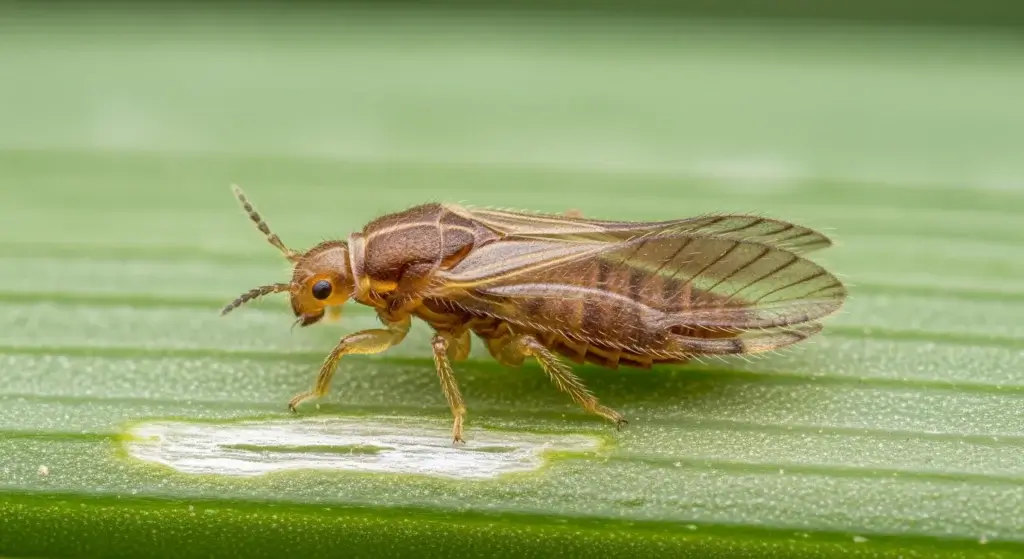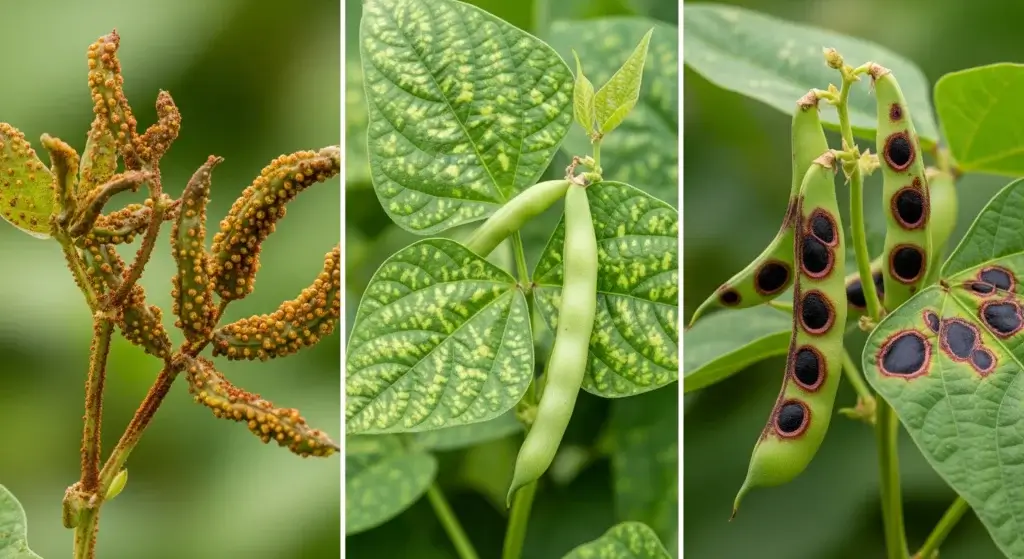
Discover the beauty of your garden, where hidden invaders might be quietly causing trouble for your cherished plants.
This in-depth guide is your tool to uncover the secrets of aphids, those sneaky pests that can disturb the peace of your vibrant sanctuary.
Take a closer look at this valuable resource to learn more about recognizing and dealing with these elusive adversaries.
What are Aphids?
Aphids belong to the scientific family Aphididae, which is part of the superfamily Aphidoidea and the order Hemiptera.
The Aphididae family is enormous, encompassing thousands of species found all over the world.
They are soft-bodied, pear-shaped insects known for their sap-sucking habits and their ability to reproduce rapidly. They come in various colors and sizes, making them challenging to spot with the naked eye.
The specific appearance of aphids is small and delicate, often appearing almost translucent.
- Read also: A Guide to Natural Aphid Prevention
- Read also: Ladybugs for Effective Aphid Control

What is The Typical Appearance of Aphids?
Identifying aphids is like solving a puzzle with nature’s clues. Here’s a breakdown of their typical features:
Body parts
- Shape: Pear-shaped, soft, and small, usually measuring between 1-6 mm in length.
- Color: Varies greatly depending on the species, but commonly green, yellow, black, or brown. Some species even have intricate color patterns.
- Surface: Can be smooth, hairy, or covered in a waxy coating, depending on the species.
Head parts
- Antennae: Two long, slender antennae that project from the head. The number of segments on the antennae can vary depending on the species.
- Eyes: Compound eyes, usually one on each side of the head.
Legs parts
- Number: Three pairs of long, thin legs.
- Feet: Each foot has two claws.
Abdomen parts
- Cornicles: Two tube-like structures projecting from the tip of the abdomen. These are unique to aphids and help them to excrete waste and defensive fluids.
Wings parts
- Presence: Some species have wings, while others do not. Winged aphids typically develop during periods of high population density or when resources become scarce.
- Number and shape: Winged aphids usually have two pairs of transparent wings.
What Does Aphid Invasion Look Like on a Plant?
Aphids are insects that cluster on the undersides of leaves, stems, and buds of plants.
Here are some signs that your plant may have aphids:
Feeding clusters
Aphids are notorious for forming clusters on plants, particularly on the undersides of leaves and along the stems. These gatherings serve as a telltale sign of their presence.
Keep a watchful eye on these areas during your garden inspection.
Feeding signs
As sap-sucking insects, aphids extract vital nutrients from plants, leading to visible signs of distress.
Check for wilting leaves, yellowing foliage, or distorted growth, as these symptoms may indicate an aphid infestation.
Honeydew residue
Aphids excrete a sticky substance called honeydew, which can attract ants and foster the growth of sooty mold. If you notice a shiny or sticky residue on your plants, investigate further for aphid activity.
Sooty mold formation
The honeydew provides an ideal medium for the growth of sooty mold spores.
These spores colonize the sticky honeydew, forming a dark, powdery, or velvety layer on the surfaces of leaves, stems, and other plant parts.
Ant activity
Ants can serve as indirect indicators of aphid presence. Aphids produce honeydew, a sweet substance that attracts ants.
If you observe ants crawling on your plants, it may suggest that they are “farming” aphids.
Ants protect aphids from predators in exchange for the honeydew they produce.

What are Some Common Mistakes to Identify Aphids?
Mistaking other insects for aphids
Mixing up other insects with aphids is a common error in gardening. Here are some distinctions to help avoid confusion:
Thrips
Thrips are slender insects, similar in size to aphids, but they have wings.
Unlike aphids, their feeding leaves have silvery streaks on leaves rather than causing distortion.
Mealybugs
Mealybugs are white, fluffy insects that gather in clusters and feed on plant sap, a behavior shared with aphids.
However, mealybugs are larger and move more slowly than aphids.
Ants
Although ants might be attracted to the honeydew produced by aphids, it’s essential to recognize that ants themselves are not pests.
They often form a symbiotic relationship with aphids by protecting them in exchange for the sweet honeydew.
Focusing only on color
Aphids come in various colors, such as green, yellow, and black, but they can also appear in less common hues like brown, red, or even pink.
It’s crucial not to solely rely on color when trying to identify them.
Ignoring size and shape
Aphids are small, generally measuring less than 5 mm in length. While there are other insects of a similar size, it’s notable that aphids have a distinct pear-shaped body.
This shape sets them apart from other insects that may share their size but differ significantly in form.
Neglecting undersides of leaves
Aphids often hide on the undersides of leaves, making them less visible from above.
Neglecting to inspect this area during plant examinations can result in a failure to detect aphid colonies.
Underestimating the importance of timing
Aphid numbers vary as the seasons progress.
They can be more challenging to notice in the early stages or during their dormant phases.
It’s advisable to routinely check your plants to detect infestations at an early stage.
Relying solely on visual inspection
While visual inspection is essential, relying solely on this method can be a mistake.
Consider using a hand lens or magnifying glass to get a closer look at the undersides of leaves, where aphids often cluster in hidden crevices.
If unsure, consult a gardening expert or reliable online resources with detailed descriptions and multiple images.

- Read also: A Guide to Aphid Control on Your Roses
- Read also: Effective Strategies for a Healthy Garden
Conclusion
In your fabulous gardens, staying vigilant against aphids ensures a harmonious and healthy environment for plants to thrive.
By fostering awareness and making informed decisions, we can preserve the beauty of our gardens and protect them from the subtle menace of aphid invasions.
Frequently Ask Questions
Yes, several natural predators, such as ladybugs and lacewings, feed on aphids. Additionally, neem oil and insecticidal soaps can be effective in managing aphid infestations.
No, aphids come in various colors and sizes. Their appearance can vary based on the species and the plants they infest.
Regularly inspect your plants, encourage natural predators, and maintain good garden hygiene by removing weeds and debris.



